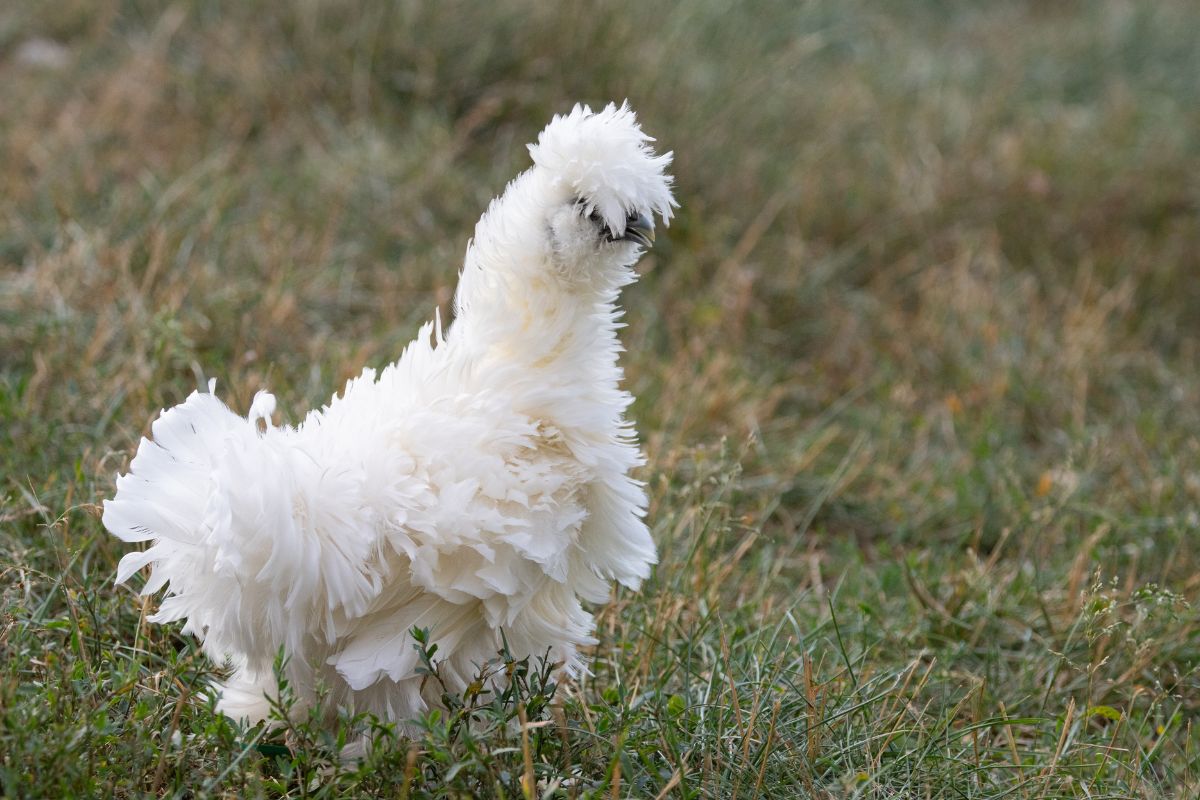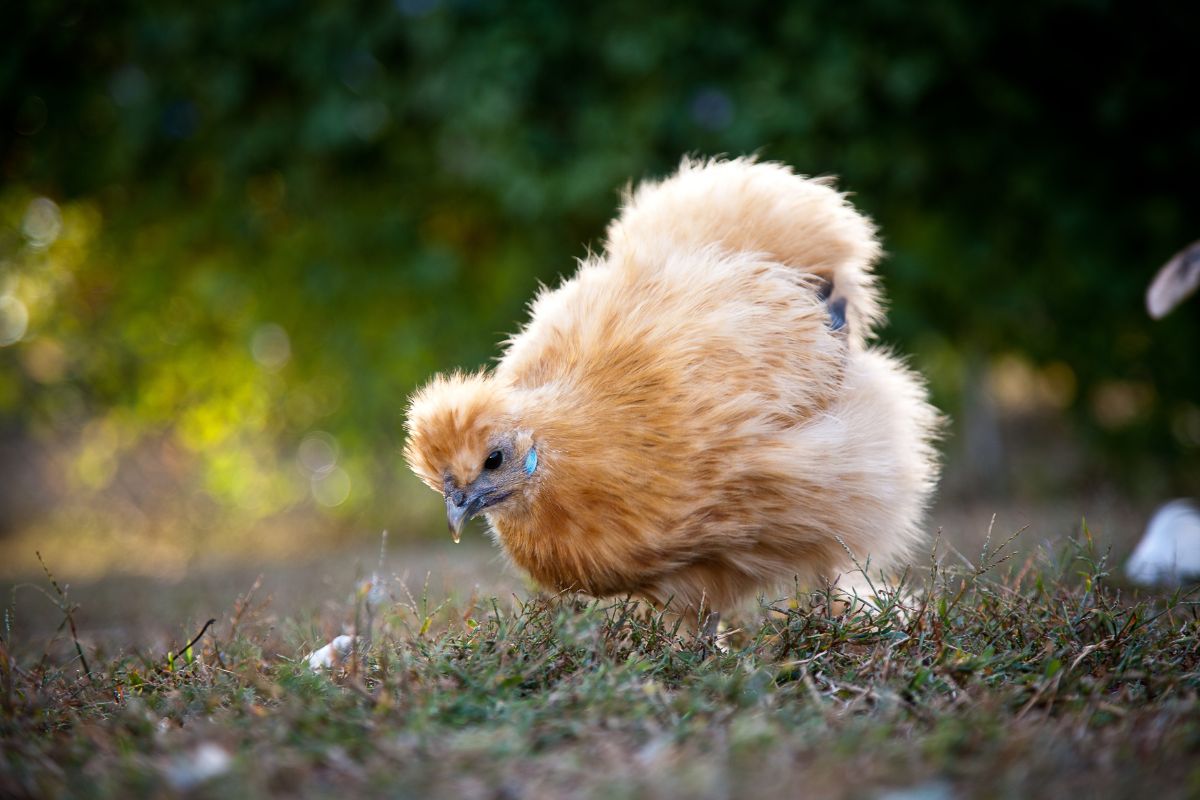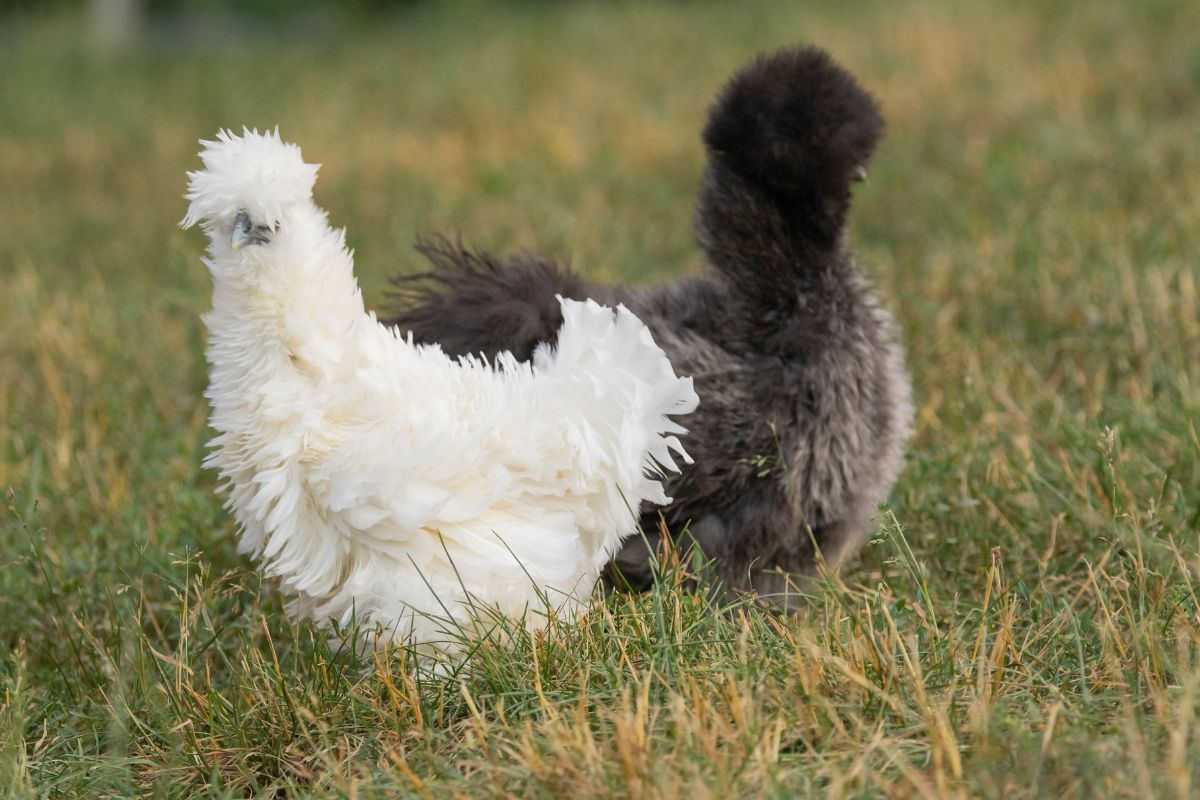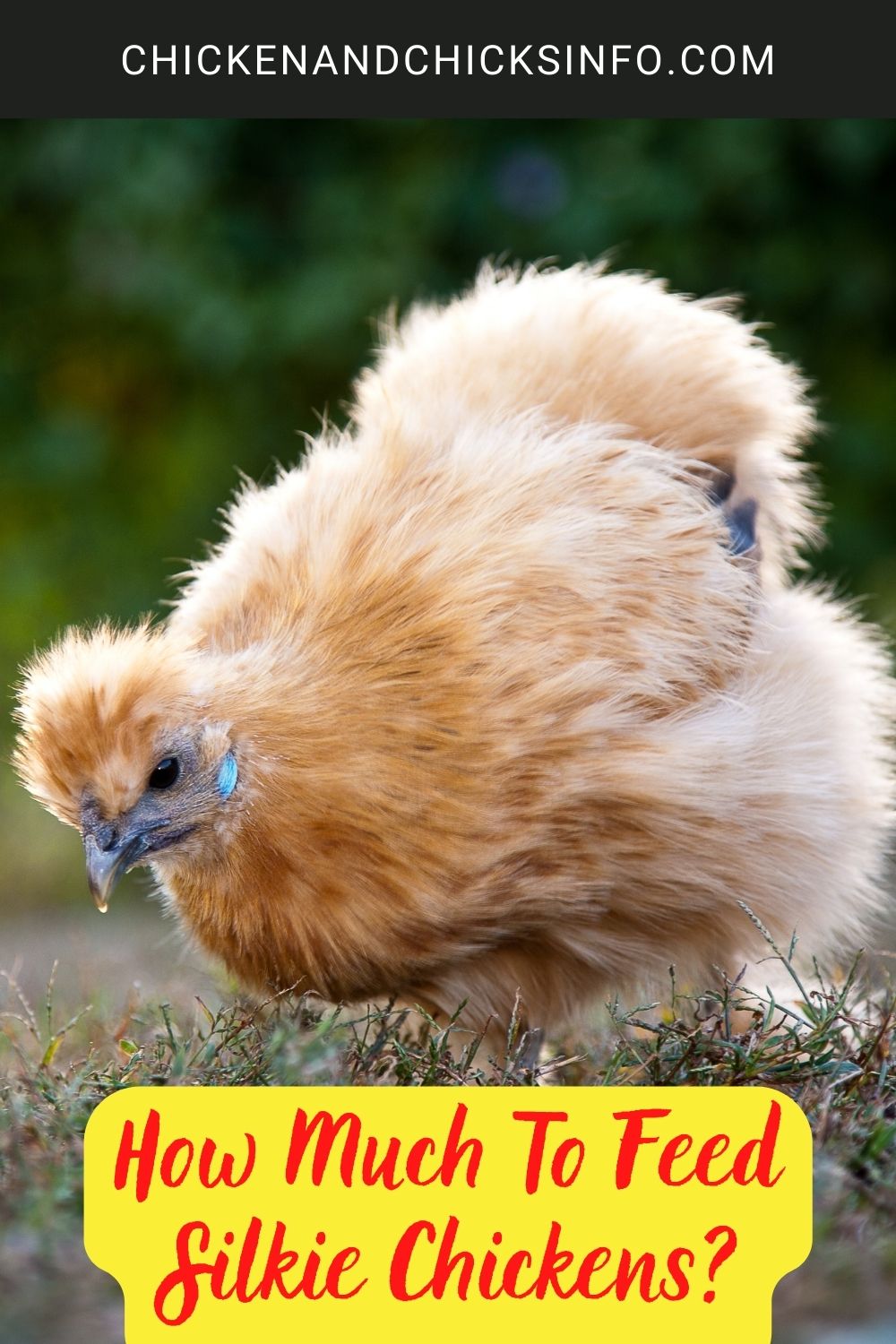
Silkies are cute little chickens. If you’re wondering if they eat less than “regular” size backyard chickens, you’d be right. Not much less though, Silkies will typically eat around ¼ lb of chicken feed a day (plus treats).
Jump to:
What To Feed Silkies?
Silkies may look very different from other chickens with their fluffy coats of feathers, but they’re still chickens.
They eat the same foods as other backyard chickens. They are a lot smaller, so they will eat a little less, however.
The main things to consider when feeding Silkies is how much protein and the nutritional content they need depending on how old they are.
Here is the simplest way to feed Silkies and make sure they’re getting all the nutrition they need as they are developing:
0-20 Weeks Old
Newborn Silkies, and this applies to chicks in general, require a high protein diet and a lot of nutrients to ensure they maintain good health.
Some people provide a “starter” feed that has around 20% protein for the first 6 weeks or so. Then swap to a “grower” feed that has a little less protein for the next stage of their life.
What I did with my last chicks was give them this “start and grow” feed from Purina (link to Amazon below).
This feed is designed to be given to chicks from hatching to until they’re ready to start laying eggs. Which with Silkies can be anywhere between 5-9 months of age in my experience.
Around 20 Weeks Onwards

As I mentioned above, I’ve heard of Silkie hens laying eggs anywhere from 5 months up to as late as 9 months of age.
When they do start laying, however, you need to swap to a layer feed. Layer feeds are specially formulated to deliver all the nutrition laying hens need to produce healthy eggs.
This means plenty of calcium, which is vital for strong eggshells. As well as around 16% protein and some other key nutrients.
The layer feed I give my hens is this organic one from Manna Pro (I’ve linked to Amazon below if you want to check it out).
I prefer to go with a good organic feed that doesn’t include GMO or other additives. After all, their feed is contributing to the quality of their eggs - and we all want delicious eggs.
In addition, to feed, you should also provide some tasty fruits and vegetables, such as; carrots, leafy greens, beets, squashes, etc.
Just be sure to check foods are safe before giving them to your chickens. You can find out loads more about which foods are and aren’t safe by browsing the blog here.
How Much Do Silkies Eat per Day?

As I mentioned in the opening, like most chickens, fully-grown Silkies will eat about ¼ lb of feed per day. Bantams will eat around ⅕ of a lb at a rough guess.
There is often some confusion around whether or not Silkies are bantams. The bantam Silkie is actually a separate variety to the full-size Silkie. Although, they are much more popular and even the full-size Silkie is smaller than a regular chicken.
According to Wikipedia, the average weight of a female Silkie is 1.5-2 lbs. That’s the bantam for sure, I’ve seen full-size adults weighing 4-4.5 lbs.
That’s still a lot smaller than say a Plymouth Rock, which has a listed weight as 6.5 lbs. Or a Rhode Island Red that comes in very similar at 6.6 lbs.
These medium-large chickens eat about ½ lb of feed a day plus treats. So, don’t be surprised if your Silkies are eating less than that.
Oh, and don’t forget to provide plenty of grit and fresh drinking water!
How Many Times a Day Should You Feed Chickens?
Feeding chickens is the easy part. They love food, and generally speaking, they’re pretty good about not overeating.
I feed my chickens twice a day. I open their feeder in the morning and make sure it’s topped up, and I also top it up in the evening while throwing them some scraps and other treats.
It’s really up to you though. The important thing is that there is feed available while they’re awake. Just make sure you don’t put too much out or it’ll spoil faster and might attract pests.
Related - You can read more about how often to feed chickens here.
In Summary
As you can see, Silkies are easy to raise, they don’t eat or cost much, and give back plenty in the form of fun and eggs anyway.
As long as you’re providing a good quality feed appropriate to their age and development, they’ll eat as much as they need and maintain optimal health.





